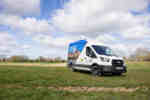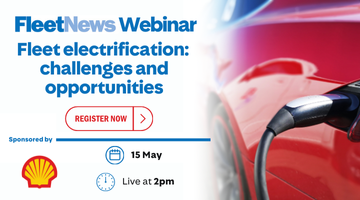'In the early days of the automotive boom, a customer could have 'any colour they wanted, as long as it was black', as Henry Ford stated.
Things have come a long way since then. Variety and added-value services are now part and parcel of the automotive sector, with manufacturers differentiating models and therefore gaining market share not only through slick design but also through extensive add-ons that make the life of the driver easier and safer. The next 'big thing' is widely expected to be a surge in the telematics market.
Telematics – the combination of telecommunications and informatics – is about the provision of one and two-way communications systems in vehicles. Viewed not only as a way of providing enhanced services to drivers, telematics is also a means of improving driving and vehicle safety, security and performance.Wavecom predicts the market will grow from 2.9 million applications in 2003 to 11 million by 2006.
Factors driving the market increase include rising car crime, which creates demand for tougher tracking solutions, growth in congestion systems and electronic toll collection systems, the increased sophistication of insurance requirements and an upturn in demand for low-cost navigational systems.
Of course, the ability to communicate while on the road is, in itself, nothing new – telephones, radio and even CB radios have long enabled drivers to communicate with the outside world. However, the next generation of wireless telematics applications are taking the concept of the wireless connection to a higher level.
The key is to make the driving process simpler and more efficient. Using the latest technology, traffic information, itineraries, roadside assistance, emergency calls, real-time logistics management and much more become a reality – all managed and controlled via wireless connectivity.
Wavecom has identified four aspects to the telematics revolution:
The comfort zone is about making driving more pleasurable, enabling drivers to make informed choices as to the journeys they make and providing added-value communications like route finders, information services, entertainment and communications tools.
The key debate in this comfort zone of the telematics revolution is how to get intelligence into transport without compromising on safety. Numerous studies show mobile phone usage while driving is a significant cause of vehicle accidents – whether or not a 'hands-free' kit is in use. Most companies operating in the automotive sector are looking at developing non-intrusive wireless driver aid systems – route planners, voice-operated systems and entertainment systems for back-seat passengers.
In the safety zone, the focus is on enhancing the safety of drivers, vehicles and goods.
Here, the focus is on areas including stolen vehicle tracking and instant lock-up at the moment of unauthorised access, or of linking emergency signals to airbag activation.
In the maintenance zone, the focus is on pre-empting potential vehicle problems – providing remote monitoring of vehicle functions. With both safety and maintenance zones, the key is automation, linking systems directly into in-vehicle electronics.
In the efficiency zone, the aim is to make available resources work better. For example, when looking at logistics or fleet management, it's about making sure you are using the right number of vehicles as effectively as possible.
Telematics is quickly becoming the high priority for in-vehicle market growth, with a tremendous potential return on investment, but its success extends beyond the vehicle itself to the surrounding transport infrastructure. Perhaps the biggest potential is that of radically altering the way the automotive industry works, looking not just at automotive culture but transportation as a whole, with governments, transportation providers, fleet companies, motorists and so on working together towards a common goal.'
















Login to comment
Comments
No comments have been made yet.